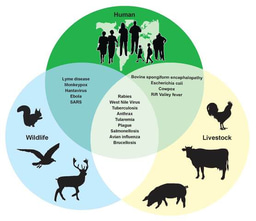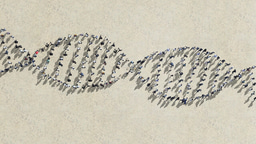How to write an abstract
Published in Healthcare & Nursing, Astronomy, and Social Sciences

The goal
The purpose of an abstract is to spark the reader’s interest in the story and motivate them to continue reading the whole paper. It might be obvious, but it is worth pointing out that people only cite your work if they have read it. A compelling writing style is a first step in that direction because a well-written paper is more likely to have a large readership.
The recipe
Consider an abstract a 5-part structure consisting of 1) introduction, 2) problem/objective, 3) “Here we show”, 4) main results & conclusions, and 5) implications.
1) Introduction (2 sentences):
--> Sentence 1: Basic introduction to the field; accessible to scientists of any discipline.
--> Sentence 2: Background of the specific research question; comprehensible to scientists in the same or closely related fields of research.
2) Problem/objective (1 sentence):
--> Explanation what is missing/unknown/problematic, i.e. why the current study happened. Typically, this sentence starts with “However”.
3) “Here we show” (1 sentence):
--> The main result/key finding summarised in one sentence, which starts with “Here we show”.
4) Main results and conclusions (~ 3 – 5 sentences)
--> Summary of the most important findings of the study that are the foundation of the main conclusions. A few key bits of data are welcome but adding too many numbers is off-putting to the reader. Keep it focussed.
--> Unless the method is new and/or a main part of the paper, there’s no need to include any details in the abstract. If you mentioned, it should be included in a sentence along the lines of “Using xyz, we show that (…)”.
5) Implications (1 – 2 sentences)
--> Some explanation on how your findings advance the field. Where does your work lead and what are the immediate implications? The word “immediate” is key here because being too creative or hyping the work are pitfalls that should be avoided. Rather, keep it realistic and explain which opportunities your work offer and/or what it leads to.
If you hit the five marks above in exactly this order, your abstract is likely to tell a compelling story. Of course, there are also some journal-specific formatting requirements for your abstract. For instance, for Nature Communications those are: 150 words max., no references or unnecessary abbreviations/acronyms, and the results should be presented in the present tense.
The target audience
One last piece of advice: When writing the abstract and, in fact, your whole paper, consider your ultimate audience, which are active scientists not editors. Getting published is only the first step. Eventually, your paper is supposed to attract as many readers as possible so it gets the exposure and attention it deserves.
Further writing advice and courses
Of course, there is much more to writing a compelling paper, and I might write further posts on this matter. For those who would like to boost their skills in scientific writing and better understand how to navigate the publishing system, Springer Nature offers Nature Masterclasses which include face-to-face workshops, webinars, and online training courses (free sample here and free online course “Focus on Peer Review” here).
Follow the Topic
-
Nature Communications

An open access, multidisciplinary journal dedicated to publishing high-quality research in all areas of the biological, health, physical, chemical and Earth sciences.
Related Collections
With Collections, you can get published faster and increase your visibility.
Women's Health
Publishing Model: Hybrid
Deadline: Ongoing
Advances in neurodegenerative diseases
Publishing Model: Hybrid
Deadline: Dec 24, 2025





Please sign in or register for FREE
If you are a registered user on Research Communities by Springer Nature, please sign in